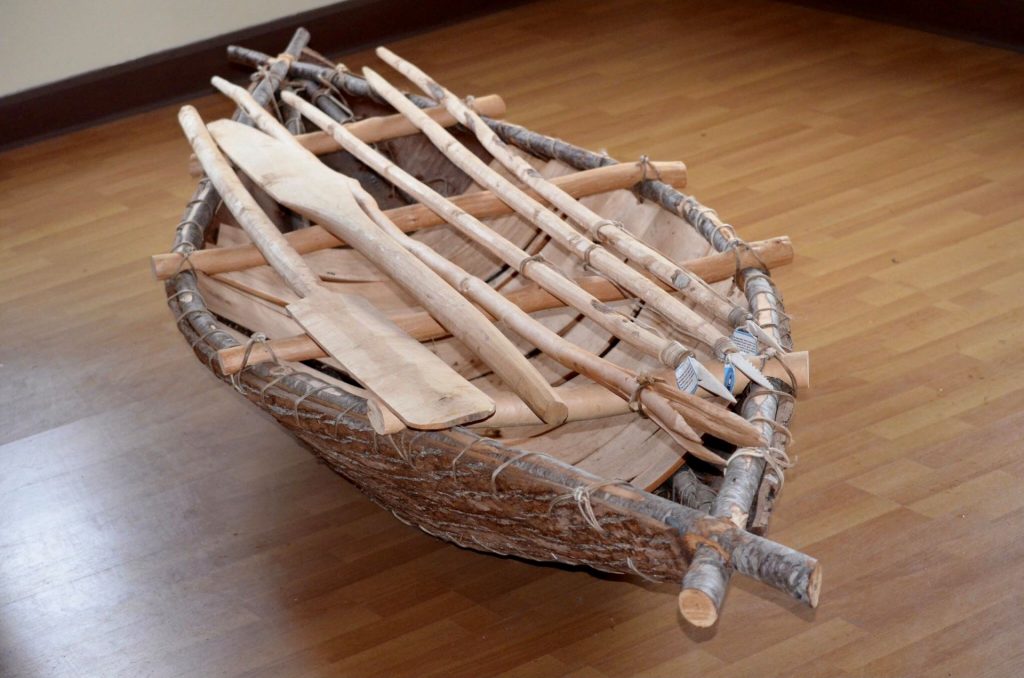By Bridget Anderson.
January always feels like a slog. All the chores put off until ‘the New Year’ in expectation that 2022 would never come have mounted up. It’s dark and too cold/not cold enough. Summer feels it will never happen. And COVID, ugh COVID. So, instead, I’m thinking of things to look forward to in 2022.
First, there’s the launch of the ESRC Centre for Sociodigital Futures co-directed by Susan Halford and Dale Southerton. One of the domains of digital practice explored in the Centre is moving. We will be partnering with Goldsmiths and with Forensic Oceanography to research the significance of individual technologies and data analytics in shaping mobilities. We will also look at how the imaginaries, designs, uses and accessibility of digital technologies shape experiences, understandings and regulations of the movement of people and things. This is a new field for us and we’re very excited about developing it further with these fantastic new colleagues.

From future to past. There’s a great book coming out that I’ve had the privilege to get a sneak preview of. Global Labor Migration: New Directions (University of Illinois Press) edited by Julie Greene, Eileen Boris, Joo Cheong Tham and Heidi Gottfried, is now in press. It is a wide-ranging collection that looks at global labour mobility from the late 19th century to the present day. And it is truly global, looking at mobility patterns across the world, global empires, intermediaries and migrant labour’s role in anti-colonial resistance. It includes contributions from MMB’s own Katie Bales and Rutvica Andrijasevic, as well as postgraduates doing cutting-edge research. It is a fantastic range of essays that includes: the exploration of how FAIR challenged asylum seekers’ right to work on the basis that the INS has a duty to ‘protect’ US workers from the economic migrant; how assertations of national sovereignty, anti-communism and racist restrictions resulted in moving from migrant labour governance by the ILO to the foundation of the IOM; and how states, through UN mechanisms, have depoliticised migration and underdevelopment even as they have acknowledged a connection between them.
Taking these essays together we can see how the nominal equality of states, whose power, in practice, is deeply unequal, only obfuscates this inequality further – an inequality that has been hewn, resisted and fostered through human movement. Race is occluded by ‘nationality’, and racial hierarchies by hierarchies of poverty and power, but the interconnections between race, nationality and global inequalities are exposed by international migration and the intense efforts to control it. Do take a look at this edited volume when it comes out.
Those of you with an interest in history might want to check out some of the History Department seminars in the coming weeks too. Several are related to migration and mobilities including MMB member Dr Saima Nasar on ‘We Refugees? Discretionary Humanitarism and the Ugandan Asian Expulsion’; Professor Santanu Das (Oxford) on ‘Experience of Sea Voyages in the 20th Century’; and Stephen J. Brooke (York University, Toronto) on ‘Spectacle, Violence and the Ordinary: London’s Political Culture, 1981-86’. Contact the History Department for more details.
Then we have the visit of Professor Nandita Sharma to look forward to. MMB will be hosting Nandita as a Benjamin Meaker Distinguished Visiting Professor for one month from 21st June. Events will include a public lecture where she will discuss how, from the 1950s onward, racism was increasingly considered unacceptable in mainstream politics at the same time as state sovereignty was nearly universally nationalized. Her talk will chart this history to unpack the complexities of the relationship between ideas of race and national sovereignty. As well as her lecture we hope to hold an event in the Watershed Cinema, and a graduate seminar.
If that feels too far in advance, we have our fireside plotting to look forward to. We will be working with the Brigstow Institute to host a series of conversations at the (de)Bordering plot in Royal Fort Gardens. These will be informal and highly interactive events – with wine! – around a fire. Given it will be outside, we are hoping these plans will not be waylaid by Omicron, though you never can tell.
And if that’s too cold for you we have a new Insights and Sounds series starting in the spring that will bring interviews on the latest in migration and mobilities thinking to you online. In this series we have very varied interviews carried out by different MMB members including our Research Challenge leads, Reading Group co-ordinator and a PhD student in the School of Education. Some of these will fit into our ongoing series on ‘New writing in migration and mobilities’, in which we feature recently published books that take a new angle on the subject through blogs, interviews and events. We are also commissioning a new blog series in partnership with the Cabot Institute on migration and climate change, which will bring together researchers working on these themes from different disciplines across Bristol.
It was very disappointing to have to cancel our Christmas party due to COVID but we will hold an event in early summer to gather everyone together in person again. Until then, enjoy our blogs, interviews and events and do let us know if you would ever like to contribute to our MMB output. Wishing you all a happy and healthy 2022!



